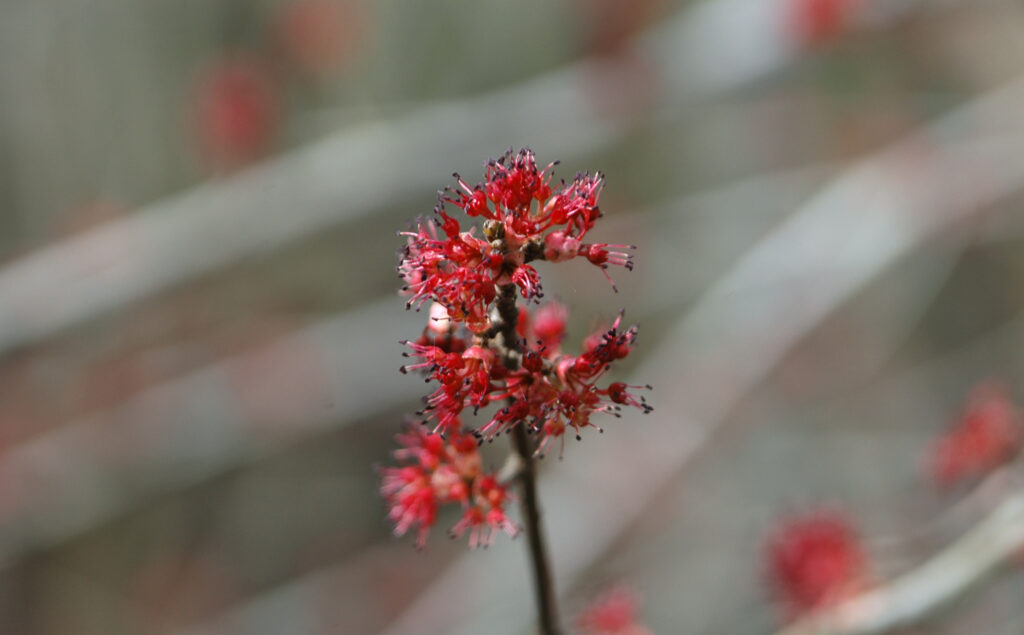Red Maple Brightens a Winter Landscape
go.ncsu.edu/readext?847604
en Español / em Português
El inglés es el idioma de control de esta página. En la medida en que haya algún conflicto entre la traducción al inglés y la traducción, el inglés prevalece.
Al hacer clic en el enlace de traducción se activa un servicio de traducción gratuito para convertir la página al español. Al igual que con cualquier traducción por Internet, la conversión no es sensible al contexto y puede que no traduzca el texto en su significado original. NC State Extension no garantiza la exactitud del texto traducido. Por favor, tenga en cuenta que algunas aplicaciones y/o servicios pueden no funcionar como se espera cuando se traducen.
Português
Inglês é o idioma de controle desta página. Na medida que haja algum conflito entre o texto original em Inglês e a tradução, o Inglês prevalece.
Ao clicar no link de tradução, um serviço gratuito de tradução será ativado para converter a página para o Português. Como em qualquer tradução pela internet, a conversão não é sensivel ao contexto e pode não ocorrer a tradução para o significado orginal. O serviço de Extensão da Carolina do Norte (NC State Extension) não garante a exatidão do texto traduzido. Por favor, observe que algumas funções ou serviços podem não funcionar como esperado após a tradução.
English
English is the controlling language of this page. To the extent there is any conflict between the English text and the translation, English controls.
Clicking on the translation link activates a free translation service to convert the page to Spanish. As with any Internet translation, the conversion is not context-sensitive and may not translate the text to its original meaning. NC State Extension does not guarantee the accuracy of the translated text. Please note that some applications and/or services may not function as expected when translated.
Collapse ▲ While most deciduous trees are bare and seem lifeless, red maple brightens the gray January landscape. Red to yellow-orange flowers appear to float amid the bare branches. Upon closer inspection, red maple flowers are extremely intricate. Red maple trees are dioecious, meaning male or female flowers occur on separate trees. Still, it is not uncommon for both male and female flowers to appear on the same tree. The male flowers appear a light yellow-orange due to their long, protruding stamens, loaded with pollen and encouraging pollinators to visit for a snack. In comparison, female flowers are darker, a subdued red hue with sticky, fuzzy stigmas extending past the petals prepared to catch pollen floating by. While maple tree flowers are primarily wind-pollinated, pollinators buzzing around in January, when not much else is flowering, gladly take advantage of this rare treat. As the flowers fade, fruit, often showier than the flowers, appear. The fruit, botanically classified as a schizocarp, is split into two-winged structures called samaras. The samaras dangle on the ends of branches by thin pedicels (stalks). They remain on the tree for about a month after the spring foliage emerges until the wind eventually disperses them. When masses of fruit clusters are present, it appears as though trees are still in bloom due to their bright, showy red color. On clear winter days, a hazy red vignette of the tree’s canopy against a blue-sky backdrop is quite striking to behold. Also, honey bees love to forage the pollen from red maple during the winter. For more information about horticulture topics contact your local North Carolina Cooperative Extension office at 919-496-3344 or email colby_griffin@ncsu.edu.
While most deciduous trees are bare and seem lifeless, red maple brightens the gray January landscape. Red to yellow-orange flowers appear to float amid the bare branches. Upon closer inspection, red maple flowers are extremely intricate. Red maple trees are dioecious, meaning male or female flowers occur on separate trees. Still, it is not uncommon for both male and female flowers to appear on the same tree. The male flowers appear a light yellow-orange due to their long, protruding stamens, loaded with pollen and encouraging pollinators to visit for a snack. In comparison, female flowers are darker, a subdued red hue with sticky, fuzzy stigmas extending past the petals prepared to catch pollen floating by. While maple tree flowers are primarily wind-pollinated, pollinators buzzing around in January, when not much else is flowering, gladly take advantage of this rare treat. As the flowers fade, fruit, often showier than the flowers, appear. The fruit, botanically classified as a schizocarp, is split into two-winged structures called samaras. The samaras dangle on the ends of branches by thin pedicels (stalks). They remain on the tree for about a month after the spring foliage emerges until the wind eventually disperses them. When masses of fruit clusters are present, it appears as though trees are still in bloom due to their bright, showy red color. On clear winter days, a hazy red vignette of the tree’s canopy against a blue-sky backdrop is quite striking to behold. Also, honey bees love to forage the pollen from red maple during the winter. For more information about horticulture topics contact your local North Carolina Cooperative Extension office at 919-496-3344 or email colby_griffin@ncsu.edu.




